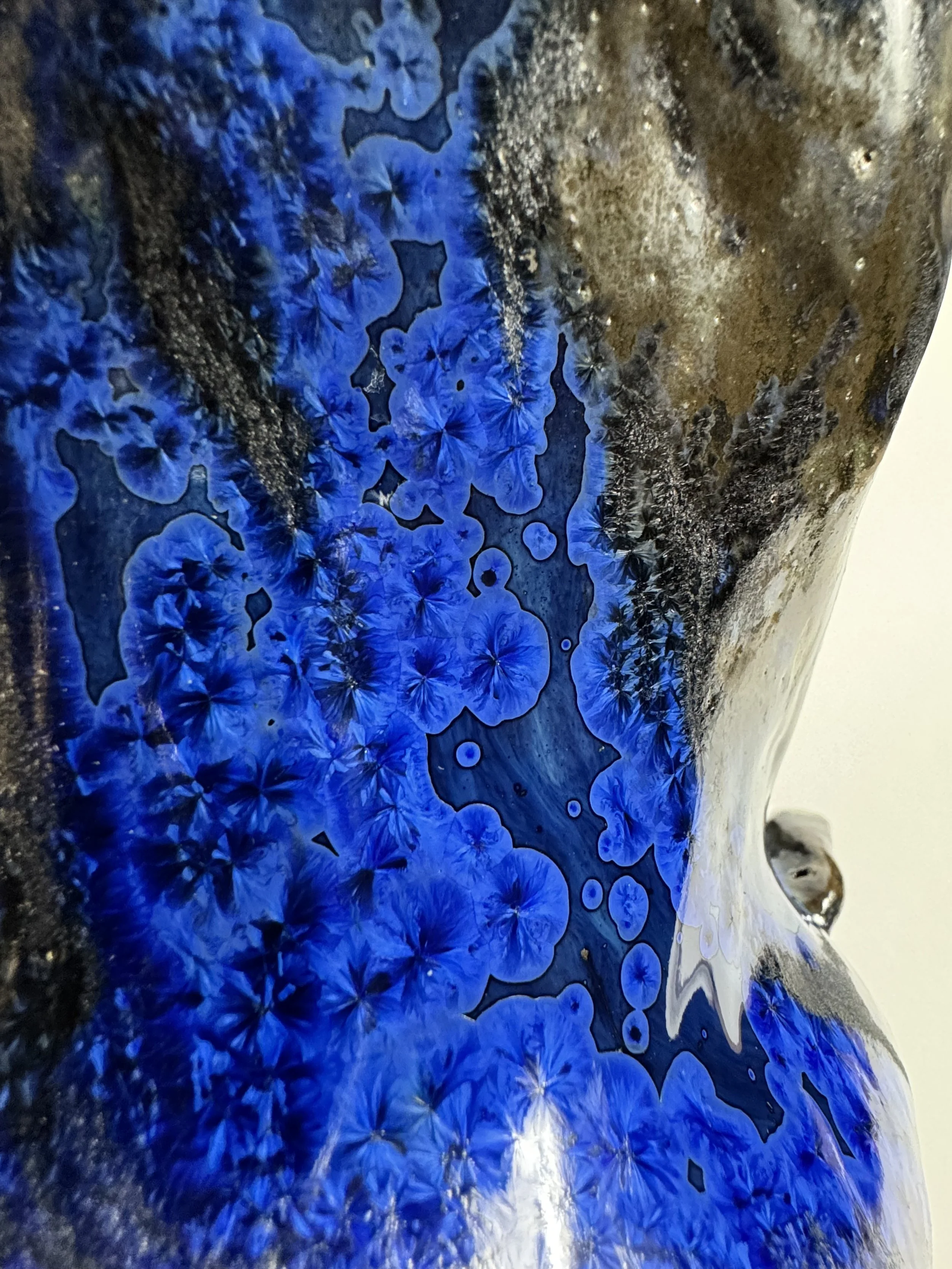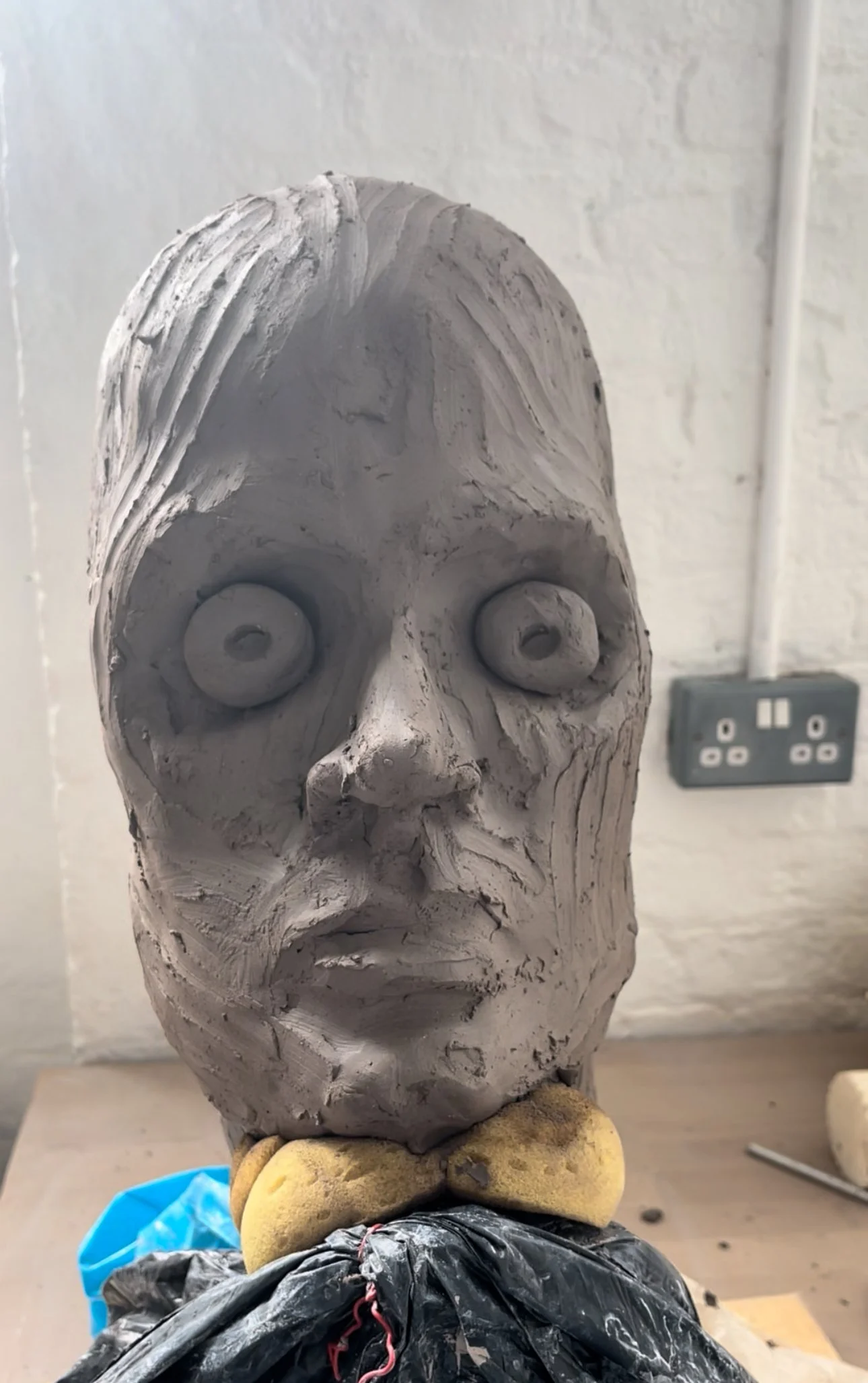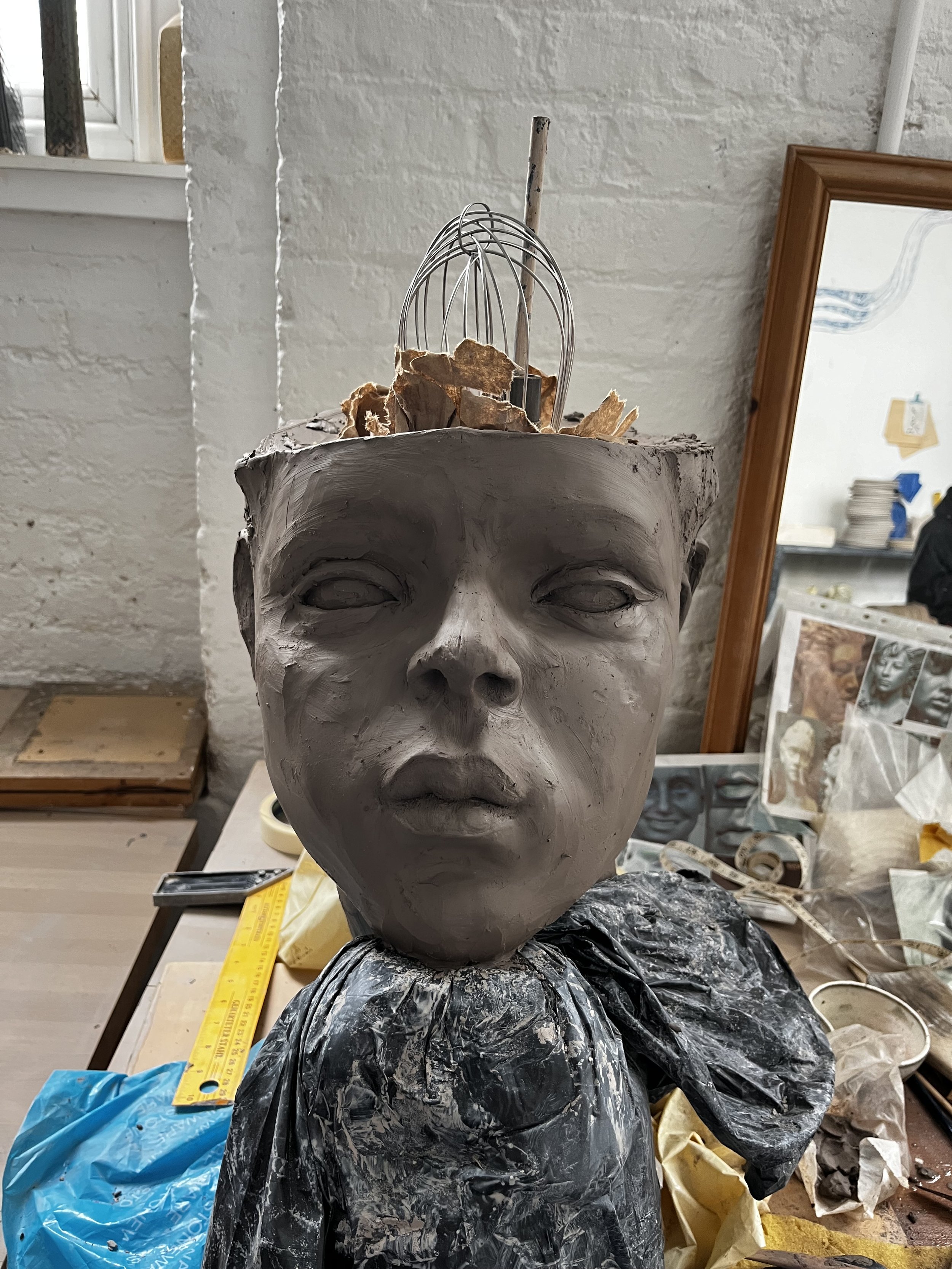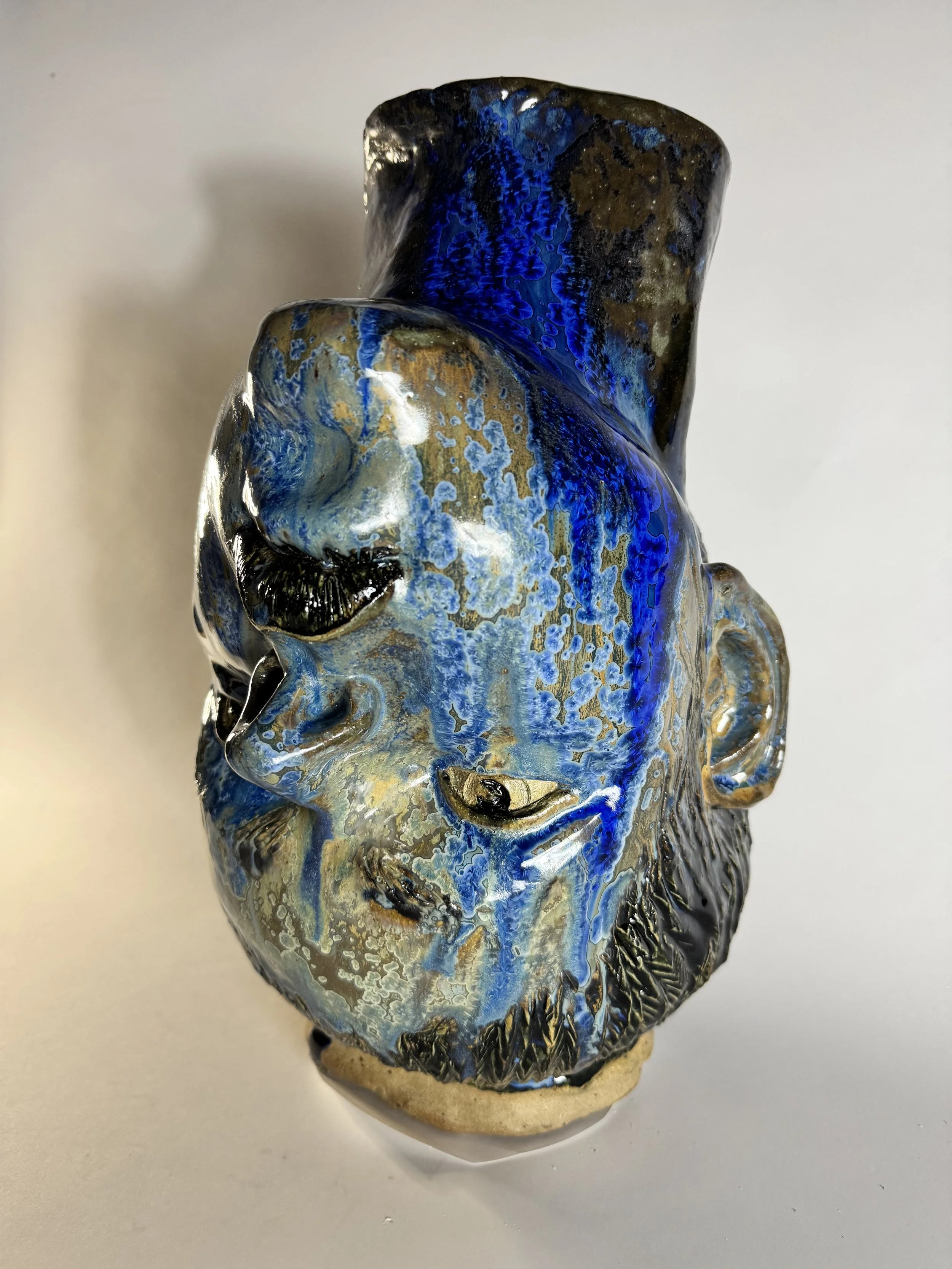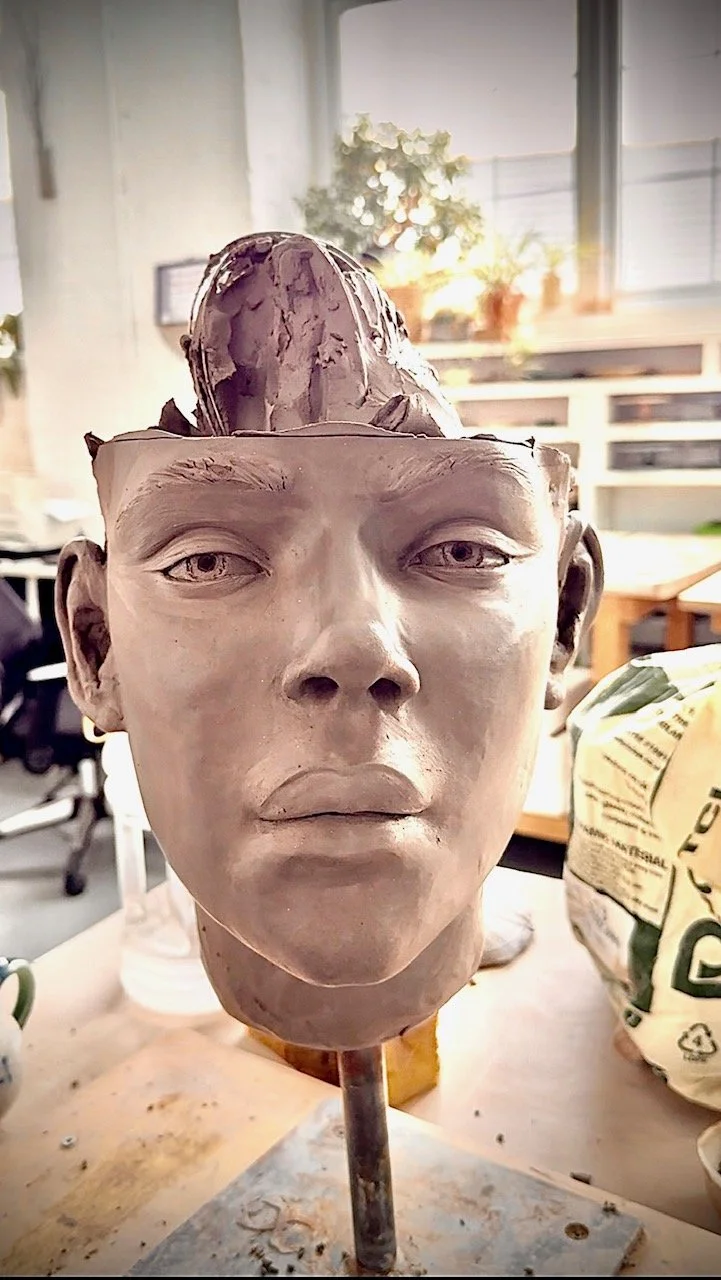All Beauty Born from Chaos
Gaia: A Sculpture in Progress
In Greek mythology, Gaia is the goddess of the Earth — the mother of all life, the origin of everything that grows and exists. When I began this sculpture, I didn’t set out to make Gaia. In fact, like most of my work, the process started without a clear plan but with a strong impulse. I only knew I wanted to make a bust, but I walked into it almost blindfolded, letting the clay guide me rather than chasing a fixed outcome.
I began with a simple frame — an armature made from steel and stuffed with paper — and layered clay over it. At first, the form looked raw and even a little frightening. But as I carved and added more detail, a face began to emerge. Slowly her features appeared, then her hair, which I patterned with small repeated shapes, almost like braids or scales. These echo the natural patterns found in nature. The interlocking shapes lead upward and are tied together with what will become a golden cloth. From this base, I experimented with different sculptural extensions — inspired by the stylised curls on the heads of Buddha figures, with their small symmetrical spikes rising into forms reminiscent of lotus buds, full and maternal, swelling outward before tapering into a single point reaching skyward. Yet I’m still undecided. I like her upside down as much as upright, because the crystalline glaze flows so powerfully across her face in that orientation that she almost feels like a different being. I wonder whether she will remain an open form, or whether I will eventually add that cloudlike, rising spire extending skyward from her crown.
The glaze was another turning point. I fired her upside down so the crystalline glazes could flow across her face. These glazes are unpredictable: during the cooling cycle, crystals grow like ice, spreading in unique patterns across the piece. When I opened the kiln, I was amazed. What had gone in as pale glaze emerged as deep blues, with crystals blooming across her face like galaxies, mosses, or frozen patterns on glass. She looked like Earth herself — alive, layered, echoing both the cosmos and the natural world.
For me, this is what makes Gaia special. She carries the feeling of creation — of atoms binding together, of life forming out of chaos. She reflects the unpredictability of the universe but also its beauty. I often find myself holding her, stroking her face, and discovering new details in the glaze every time. She changes depending on how I look at her, just as the Earth shows us different moods and seasons.
Gaia is not finished. I still wonder whether to give her a permanent hair form or leave her adaptable, with different sculptural options. But she has become more than just a bust: she feels like a collaboration between myself, the clay, the glaze, and something far bigger.
This piece is the beginning of a series of heads I plan to create. Each will represent something deeply meaningful, each its own small universe. The process is not about controlling every detail but about letting the material, the kiln, and my instincts shape what emerges. Just like Gaia herself — life, beauty, and surprise grow in unexpected ways.
The Art of Not Knowing
Sometimes, a sculpture doesn’t arrive fully formed—it unfolds. This post shares how I build instinctively, responding to the push and pull between structure and spontaneity.
Shaping a Soul in Clay
She began as nothing more than a wire frame, cable ties, and a whisk — whatever I could find to improvise volume.
From there, I started layering clay, shaping the abstract into the suggestion of a head. At first, it was all structure — skeletal, raw, almost eerie. A formless silhouette slowly found its foundation.
Then, gradually, the features began to emerge: the ridge of a brow, the lift of a cheekbone, the curve of a lip. I built her like you’d build a thought — uncertain, emotional, slow. Eventually I added her hair, shaped her ears, refined the details.
Once the clay is at the right state or firmness, its the moment of cutting- I sliced her open at the forehead and hollowed her out, removing her from the armature that held her.
She’s not finished. Not yet. But she’s taking shape — the second in a series of sculptural heads, each one unique, each one carrying its own presence. The first became Gaia: glazes ran down her face like constellations, like satellite images of Earth.
This one... I don’t know yet who she’ll be. I’m caught between instincts — do I carve intricate patterns into her, abstract her features, make her wild? Or do I honour the delicacy of her face? Do I lean into crystalline glazes or florals or something entirely new?
This is the space I love and fear — the no-man’s-land between vision and outcome. Clay teaches humility. Once she enters the kiln, everything changes. The heat will decide as much as I do. Sometimes the piece returns transformed. Sometimes it doesn’t return at all. And sometimes, when I open the kiln and lift my sculpture out, I have to just sit with it — quietly, for a while. What I put in and what I take out are often two different beings. I sit there and observe, trying to absorb what happened inside the kiln — to make peace with the transformation, even when it's breathtaking. It takes time to understand the creation again. To admire not just the form, but the alchemy — the heat, the chemistry, and the change. That’s the magic of it. The surrender. The collaboration with fire, form, physics, and time. I shape her — but in the end, she chooses who she becomes.


Orli’s Studio Journal
Latest Posts

